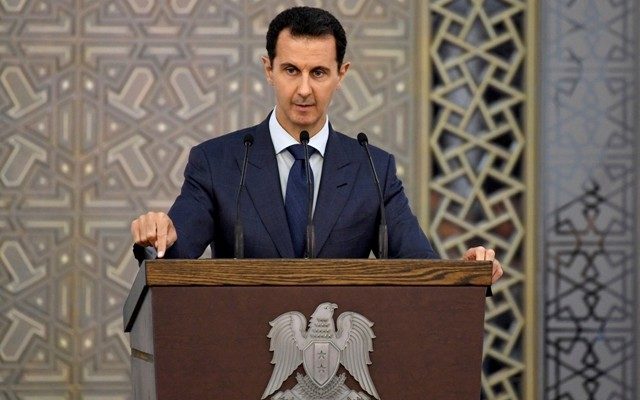The UN concluded that Bashar Assad is a war criminal and his army committed the gas attack in April.
United Nations-mandated investigators said Wednesday that Syrian President Bashar Assad’s air force conducted a sarin-gas attack in the spring that killed at least 83 civilians and sparked a retaliatory US strike.
The latest report by the Commission of Inquiry on Syria offers among the strongest evidence yet of allegations that Assad’s forces conducted the April 4 attack on Khan Sheikhoun in rebel-held Idlib province in which dozens of people were killed. The United States blamed the Syrian government and launched a punitive strike on Shayrat air base, where the report says the Sukhoi-22 plane took off.
Syrian government officials have denied responsibility, and said last month that they would allow UN teams to investigate.
“We have analyzed all the other interpretations” of who might have conducted the attack, commission chairman Paulo Pinheiro said at a Geneva news conference. “It is our task to verify these allegations, and we concluded … that this attack was perpetrated by the Syrian air force.”
Wednesday’s report, the 14th by the commission since it was set up by the UN’s Human Rights Council in 2011, covers little more than four months, from March to early July. The report is based on information retrieved from satellite images, video, photos, medical records, and over 300 interviews.
“The commission finds that there are reasonable grounds to believe that Syrian forces attacked Khan Sheikhoun with a sarin bomb at approximately 6:45 a.m. on 4 April, constituting the war crimes of using chemical weapons and indiscriminate attacks in a civilian inhabited area,” the report said.
The commission said the Khan Sheikhoun chemical attack killed at least 83 people and wounded 293. It was among four chemical attacks the commission tallied over the span of its investigation — including the use of “weaponized chlorine” in three other locations.
By: AP




